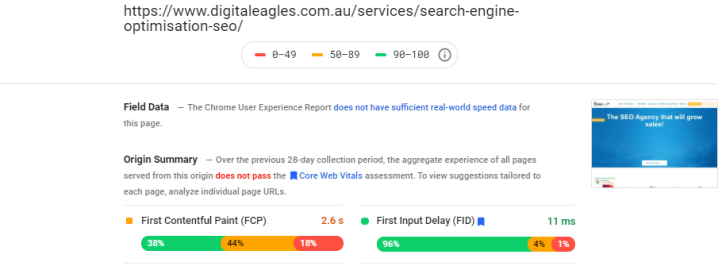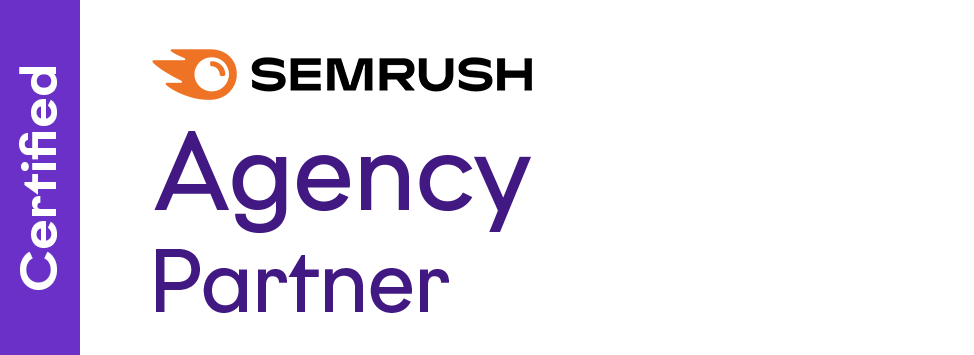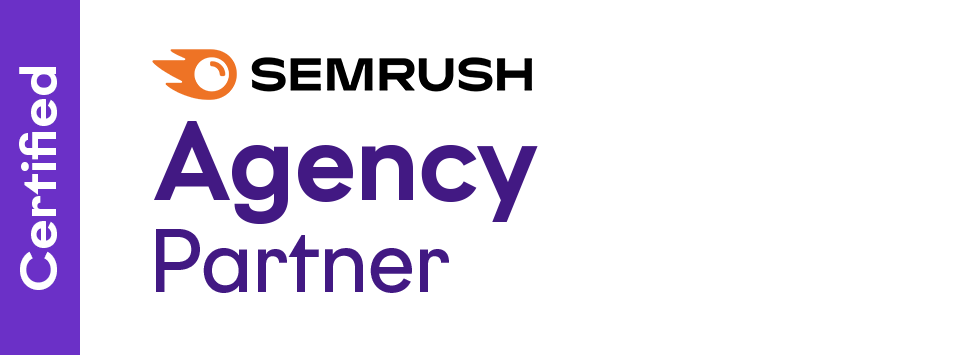While simple tweaks are a good start, diving deeper into the more complex and nuanced strategies can be a game-changer. This guide is designed for those who are ready to take their SEO knowledge to the next level. Here, we reveal advanced SEO techniques usually reserved for the professionals. Whether you’re looking to refine your existing strategy or explore new horizons in SEO, these insights will guide you on your journey to SEO mastery.
Our Top Advanced SEO Techniques For Your Website
1. Competitive Content Analysis
In the realm of SEO, knowledge of your competitors’ strategies can be a goldmine of information. Competitive content analysis involves a deep dive into the content landscape of your competitors to extract insights that can refine and enhance your own content strategy. This process goes beyond mere observation; it’s about understanding the dynamics of successful content and applying those learnings to gain a competitive edge.
Here are some tips on how to perform competitive analysis:
- Utilizing SEO Tools for Analysis: Tools like Ahrefs’ Site Explorer are instrumental in this process. They allow you to examine which pages on your competitors’ websites are performing the best in terms of traffic, engagement, and backlinks. This data provides a clear picture of what types of content resonate with your shared audience.
- Identifying High-Performing Content: The goal is to pinpoint the content that is driving significant traffic to competitor sites. This includes analyzing top-performing pages, understanding the keywords they rank for, the backlinks they’ve acquired, and the type of content (blog posts, videos, infographics, etc.) that is yielding results.
- Finding Content Gaps and Opportunities: Armed with this information, you can identify gaps in your own content strategy. Perhaps there are topics that your competitors have covered successfully that you haven’t explored yet. Or maybe there are different angles or deeper insights you can offer on existing topics. Competitive content analysis helps in pinpointing these opportunities.
2. Content Refreshing and Relevance
In the ever-changing landscape of SEO and digital content, what was relevant yesterday might not hold the same value today. Refreshing old content is a vital aspect of maintaining a robust, relevant online presence. This process is not just about keeping up-to-date; it’s about adding value, enhancing user engagement, and ensuring that your content continues to meet the evolving standards of search engines.
Here’s how you can keep your content relevant and fresh:
- Update Information and Data: Once you’ve identified which articles need refreshing, start by updating statistics, facts, and any other data points. This step is crucial for maintaining credibility and trust with your audience. Replace old references with current ones, ensuring that every piece of information reflects the latest data and trends.
- Add Fresh Insights and Perspectives: Updating content is an opportunity to inject new life into your articles. Add fresh insights, new developments in the field, or additional research that has emerged since the original publication. This approach not only improves the depth and value of your content but also shows your commitment to providing comprehensive and up-to-date information.
- Enhance On-Page SEO: Revisit on-page SEO elements such as title tags, meta descriptions, and headings. Optimize them with current best practices and incorporate relevant, high-performing keywords. Refreshing these elements can improve your content’s visibility and attractiveness to both users and search engines.
- Improve Readability and Structure: Assess the overall structure and readability of your content. Break down large text blocks, add compelling images or infographics, and ensure the content is easy to navigate, especially for mobile users. Enhanced readability leads to better user engagement, longer dwell times, and improved SEO.
Further Reading: How to Keep Your Content Relevant
3. Go Beyond Keywords And Start Creating Creating Content Hubs
Content hubs are akin to digital libraries on your website, meticulously organized around specific themes or topics. They represent a strategic approach in content marketing and SEO, where a central ‘pillar’ page serves as the cornerstone, linking to and from multiple related, in-depth subpages. This interconnected content ecosystem does more than just enhance the user experience; it significantly boosts your SEO efforts by establishing your website as an authoritative source in your niche.
Here are some key benefits of creating content hubs:
- Structure of a Content Hub: At the core of a content hub is the pillar page, which provides a comprehensive overview of a specific topic. This page then branches out to multiple related subpages, each delving deeper into specific aspects of the main topic. This structure not only provides a logical and intuitive navigation path for users but also allows search engines to easily crawl and understand the hierarchical relationship between the various pieces of content.
- Boosting Topic Authority: By covering a topic exhaustively through interconnected pages, content hubs position your site as an authority on the subject. Search engines favor websites that offer comprehensive and authoritative information, often rewarding them with higher rankings. This perceived authority also encourages other sites to link to your content, further amplifying your SEO efforts.
- Enhancing User Engagement: Content hubs keep users engaged by offering them a wealth of information all in one place. As users navigate through the interconnected pages, they are likely to spend more time on your site, reducing bounce rates, and increasing page views – both positive signals to search engines.
- Targeting a Broad Range of Keywords: Content hubs allow you to target a broad range of keywords, including high-competition head terms on the pillar page and long-tail keywords on the subpages. This comprehensive keyword coverage can lead to increased organic traffic across a wide spectrum of search queries related to your topic.
Related Article: How to Increase Website Traffic with Search Terms & Advanced Keyword Research
4. Internal Linking Can Boost Your Search Presence
Internal linking has been proven to increase rankings and traffic. Effective internal linking is key for SEO as it helps in distributing page authority throughout your site, making it easier for search engines to crawl and index your content. It involves linking related pages within your site in a way that is logical and valuable for users, enhancing both user experience and SEO performance.
Internal linking has two key benefits:
- Distributing Page Authority: Each link on your website carries a certain amount of ‘link equity’ or ‘link juice.’ When you link from one page to another within your site, you’re effectively distributing this link equity. This distribution helps to increase the page authority of lesser-known or newer pages, thereby boosting their potential to rank in search engines.
- Improving Site Navigation: A well-planned internal linking structure makes it easier for users to navigate your website. By providing logical pathways through internal links, you guide visitors to relevant and additional content, improving their overall experience. This ease of navigation is not only beneficial for the user but also signals to search engines that your site is user-friendly, which is a key factor in SEO.
Incorporating a robust internal linking strategy is an essential part of advanced SEO. It strengthens the network within your website, enhancing both user experience and search engine optimization. A thoughtful approach to internal linking can lead to improved site performance, higher rankings, and increased user engagement.
Further Reading: How Internal Links Can Boost Your Search Strategy
5. Targeting Featured Snippets
Featured snippets, often referred to as ‘Position Zero’, are a highly coveted spot in Google’s search results. They offer a unique opportunity to have your content featured prominently at the very top of the search results. Targeting these snippets requires a strategic approach to content creation and formatting.
Here are some expert tips for winning featured snippets:
- Creating Content that Answers Questions: To target featured snippets, your content should directly answer questions related to your target keywords. Research common questions in your niche and craft clear, concise answers. Tools like ‘Answer the Public’ can be invaluable for this purpose.
- Formatting for Snippet Success: Google tends to pull featured snippets from content that is well-structured and easy to extract. Use bullet points, numbered lists, and clear headings. Formatting your content in this way makes it easier for Google to understand and feature it as a snippet.
- Optimizing for Different Types of Snippets: There are several types of featured snippets, including paragraphs, lists, and tables. The type of snippet you target should depend on the nature of the information you’re presenting. For instance, step-by-step instructions are best suited for a numbered list snippet.
6. Mastering Technical SEO
Technical SEO is the backbone of your website’s search engine performance. It involves a deep dive into the more technical aspects of your site that impact how search engines crawl and index your content. Mastering technical SEO is crucial for ensuring that your site is built on a solid foundation that is search-engine friendly.
Here are some tips for getting started with Technical SEO:
- Optimizing Site Architecture: A well-structured website helps search engines and users navigate your content effectively. This includes having a logical URL structure, a clear hierarchy, and an easily navigable menu.
- Enhancing Crawlability and Indexing: Ensure that search engines can crawl and index your site without any issues. This involves managing your robots.txt files, optimizing your XML sitemap, and ensuring that important content isn’t blocked from search engines.
- Addressing Duplicate Content: Duplicate content can confuse search engines and dilute your ranking ability. Use canonical tags to signal which version of a page is the ‘master’ copy, and ensure that your content is unique across your site.
- Fixing Broken Links: Broken links lead to a poor user experience and can harm your site’s credibility. Regularly audit your site for broken links and either fix or remove them.
7. Use Structured Data
Structured data is a powerful tool that communicates the context of your content to search engines in a language they can understand. Implementing structured data, or ‘schema markup’, on your website can enhance your content’s visibility and may lead to rich results in SERPs, including enhanced listings and additional features.
Structured Data also helps power Google’s Rich Results. Utilising this functionality can also help you increase your click-through rate.
Here are some structured data tips for beginners:
- Understanding Schema Markup: Schema markup is a code that you put on your website to help search engines return more informative results for users. It essentially annotates elements of your content to define what they are – whether that be an article, a product, an event, or a recipe.
- Implementing Structured Data: There are various schemas for different types of content. Determine which schema types are most relevant to your content and use tools like Google’s Structured Data Markup Helper to implement them.
- Benefits of Structured Data: Using structured data correctly can increase the chances of your content appearing in rich snippets and knowledge graphs, which makes your listing more appealing in search results. This can lead to higher click-through rates and increased traffic.
- Staying Updated with Schema Guidelines: As search engines evolve, so do the guidelines for structured data. Keep abreast of changes and best practices in schema implementation to ensure your content remains optimized for the best possible search performance.
Final Thoughts
Advancing your SEO strategy requires a blend of creativity, technical know-how, and a keen eye for evolving trends. While these techniques offer a pathway to higher rankings and increased traffic, the world of SEO is vast and constantly changing.
If you find yourself needing guidance or support in navigating these complexities, our team of SEO experts is here to help. Reach out to us for personalized advice and strategies tailored to your unique SEO challenges. Together, we can unlock the full potential of your website in the search engine landscape.



















